|
Sergeant James Henry Swift
No 644387 RAF Air Gunner
149 (East India) Squadron.
James Henry Swift, known as ‘Jimmy’, was a member of a 149 Squadron crew in the early days of World War Two, where he flew and fought as an Air Gunner. Jimmy was 20 years old, son of Fredrick Richard and Elizabeth Betsy Swift of Upper Clapton, London
A young Jimmy Swift had volunteered for Aircrew and was attested in the same year year for the RAF (VR) as an AC2 (Aircraftman Second Class) for training as an Air Gunner.
Basic Training
Jimmy’s Initial Training was at an ITW (Initial Training Wing, where he would have been subject to the normal one or two days being kitted out, getting injections and checking over by a doctor or dentist. This was followed by the usual five to eight weeks of Basic Training, which was more directed to making the airman into a soldier rather than an airman.
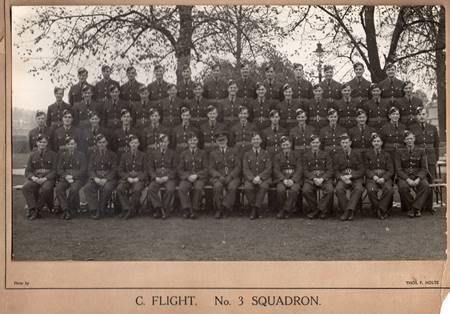
A typical Air Gunner course of the time. (source 149 Sqn Archives)
Here, aircrew cadets learned to march, did lots of PT and went to classes. They were accommodated in requisitioned boarding houses and hotels. ‘Permanent staff’ were billeted in boarding houses and the HQ was located in a local hotel.
This Basic Training was initially carried out by regular RAF discipline instructors, of Corporal or Sergeant Rank. It was a great source of unhappiness that the recruits these regulars were training would be the same, or higher rank than them in a relatively short time period.
At the start of the war, most pilots and observers were commissioned officers or senior NCOs. The people who flew as gunners and radio operators were normally taken from the ranks of the 'Erks' on a squadron. Aircraftman 1st and 2nd class manning the guns and/or turrets, and the radios were the 'norm'. As the war progressed and aircrew were shot down and captured, the authorities decided that they should make all flight crew a minimum rank of Sergeant, ostensibly to ensure that they were correctly treated if captured. Even then, the two groups were often split on capture into officers and airmen camps.
Jimmy was selected to be an Air gunner and started his training.
Basic gunnery training
Jimmy would have attended an EAGS (Elementary Air Gunner School) at somewhere like RAF Bridgenorth for 6 weeks.
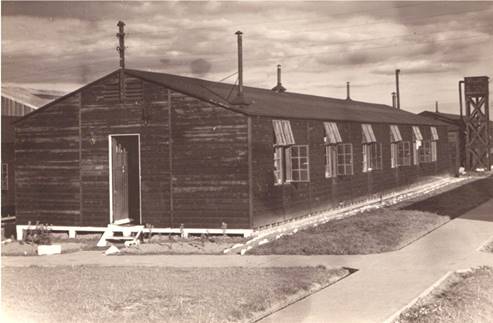
The height of Luxury! RAF Bridgnorth barracks hut 1940
The EAGS instructors had all done a tour of Ops. (30 Ops, a full tour, was rewarded with a minimum of 6 months screened from Ops). In addition to lectures, real life incidents made the Instructors appear a grand example to the Trainees. Their schooling and comments on life in the RAF helped the trainees cope with the conditions and hardships of training. All aircrew were volunteers and could cease training before flying, without detriment to their record. Leaving after commencing flying led to a charge of LMF (lack of moral fibre).
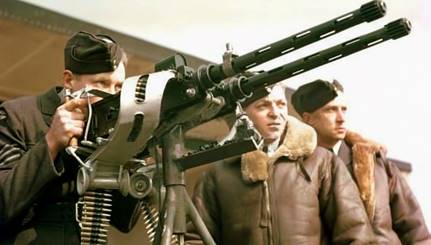
In Basic Gunnery the main thing they would have been taught was turret work ... they learned how the turret lifted the guns up and down again, how to harmonise the guns - you've got four guns and so what you want to do is put the most bullets in the centre, so when you're looking down the sight you can see the dot in the middle, and you want to put your bullets there. This was called Harmonising the guns. They also learned about the 'bullet drop', calculating the curve of fire and learning how to aim at targets in the air, how to build and strip down the .303 guns (eventually assembling them blindfolded) and finding faults on those guns.
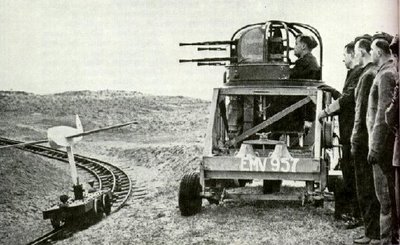
Early Air Gunner Training
One gunnery instructor at Bridgenorth, W/O 'Jock Hunter', had done his Ops on Hampden aircraft and was famous with the trainees for his use of the word 'deflection'. In gunnery terms he regarded this as essential to being a good air gunner. 'Deflection is the distance travelled by the target during the time of the flight of the bullet', he said. He would pause in a lecture and snap at a trainee. ‘What IS deflection?’ The chap had to know it off pat. This could happen three or four times in the course of an hour's lecture. They soon knew what deflection was! So Jimmy’s training proceeded on to its conclusion and his graduation.
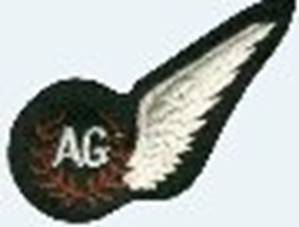
When a trainee air gunner completed his training he was given his air gunner's brevet (The badge, above) and promoted to sergeant. So Jimmy got his “wing” and passed out as a Sergeant, with a Sergeant's pay (8 shillings a day).
His next posting was to his Operational Unit, No 149 (East India) Squadron.
149 (East India) Squadron, Royal Air Force.
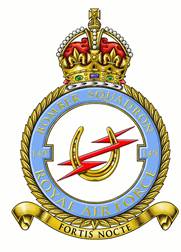
"As war approached, No 149 (East India) Squadron, which had served briefly in World War I, was re-formed in 1937 at RAF Mildenhall as a night heavy bomber unit. It was initially equipped with the last RAF heavy bomber biplane, the Handley Page Heyford, but not for long. In early 1939 these were replaced with the new geodetic structured Vickers ‘Wellingtons’.
Designed by Barnes Wallis, of Dam Buster fame, these were sturdy, reliable aircraft which could absorb a great amount of damage and still return home.
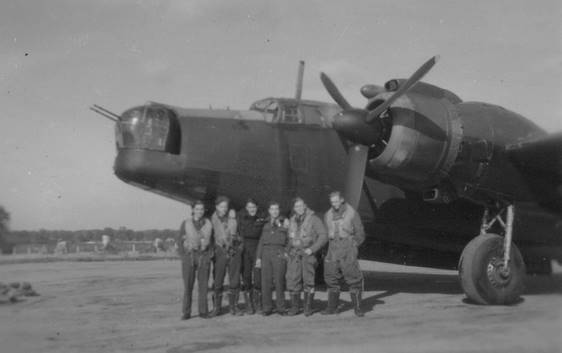
Wellington 1c of 149 Sqn – source unknown
The Aircraft.
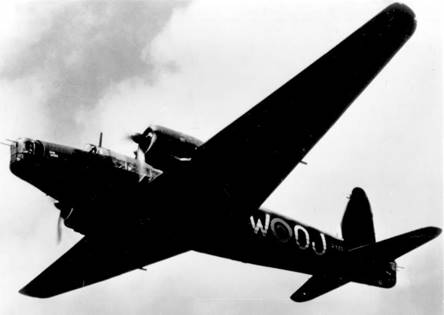
1940 Wellington 1c of 149 Sqn
The Crew.
The Crew for his first Operation was:
P/O Miller Pilot
P/O Budy 2nd Pilot
Sgt Scott Observer
Sgt Cooks Wireless Operator (Later Cpl)
Sgt Swift Air Gunner
P/O Houseman Air Gunner
This crew had flow several Operations in P9244 before Sgt Swift joined them as the Squadron was originally flying with only five crew. It was only two months since the introduction of Sgt rank for all NCO Aircrew.
Operational History.
All Jimmy’s Operations were flown with Vickers Wellington Mk 1 Serial No P9244 coded OJ-E
Jimmy’s first Operation was flown from RAF Mildenhall on 9th Jul 1940, taking off at 21.55 and landing at 23.15. The Operation was to attack Osnabruck, but was recalled due to bad weather.
Jimmy’s second Operation was flown from RAF Mildenhall on 11th Jul 1940. The Operation was to attack and destroy Naval Bases at Bremen. The Operation was successful and all aircraft returned safely.
Jimmy’s third Operation was flown from RAF Mildenhall. It was an Operation to Rotenberg to destroy the Enemy Airfield there. All aircraft returned safely.
Jimmy’s fourth Operation was flown from RAF Mildenhall on 23rd Jul 1940, taking off at 21.29 to attack Gotha, in the Cassel/Eisenbach area. They destroyed an Enemy Aircraft works, together with dropping Nickel leaflets.
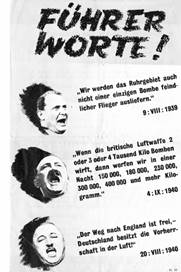 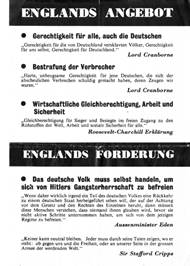
‘ Nickel’ Propaganda Leaflets of 1940
Jimmy’s fifth Operation was flown from RAF Mildenhall on 25th Jul 1940, taking off at 23.53. The Operation was to attack Enemy Aircraft works at Dortmund, together with dropping Nickel leaflets. All aircraft returned to Base.
Jimmy’s sixth Operation was flown from RAF Mildenhall on 29th Jul 1940, taking off at 22.10. The Operation was to Manheim, to attack enemy industrial targets. All aircraft returned to Base.
Jimmy’s seventh Operation, the crew’s last, was flown from RAF Mildenhall on 11th Aug 1940, taking off at 21.46. The Operation was against Gelsenkirchen industrial target and was a success. On the Aircraft’s return to Base at Mildenhall, the Captain, Pilot Officer J G Miller, got misaligned with the Mildenhall runway during landing and flew into the main Radio Mast, killing the whole crew.
Jimmy is buried at Abney Park Cemetery, Stoke Newington, London.
During Jimmy’s war time service he would have been awarded :
The 1939-45 Star (Aircrew Europe)
The Defence Medal
The Victory Medal
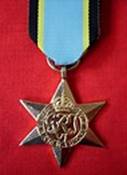  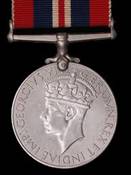
He would also have qualified for the Bomber Command Bar.
R.I.P
Compiled by Alan Fraser
Historian and Archivist of 149 (East India) Squadron. Royal Air Force.
Return to Index
|
 Stirling Pilott
Stirling Pilott 
 Stirling Pilott
Stirling Pilott 